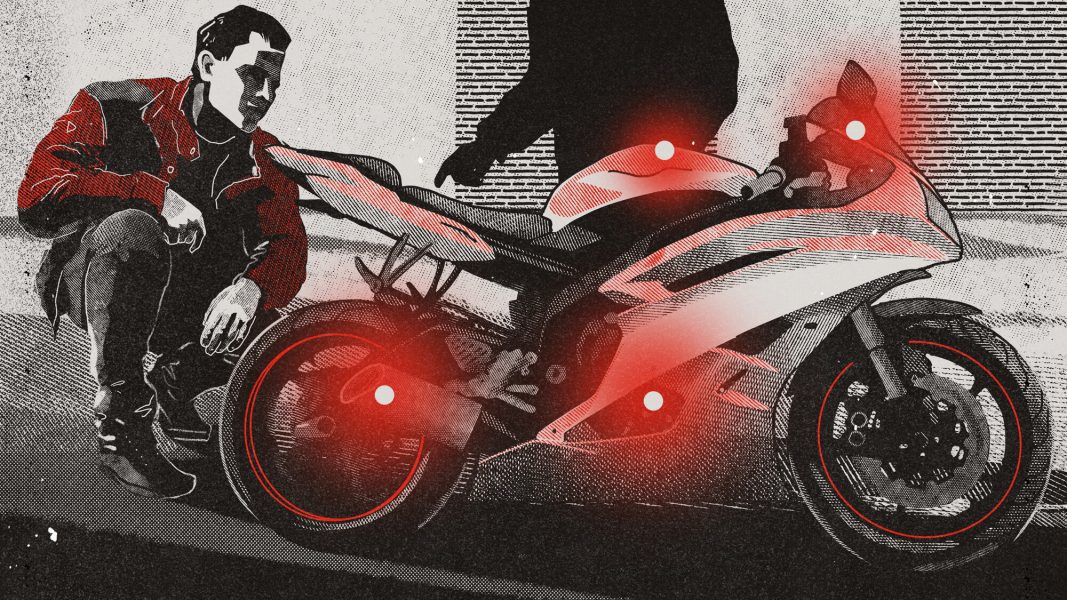
Buying a Used Motorcycle: Important Points
Content
Buy it used motorcycle for a person is often perceived as a risk for a buyer who does not know who he is actually dealing with. To eliminate as many doubts as possible and to simplify your purchase, we offer you a list of the few points to check before buying a used motorcycle.
Motorcycle history
First of all, one of the important points is to study the history of the motorcycle: first-hand, whether the motorcycle fell, what parts were replaced or even any problems. Also, try to learn more about the type of salesperson's behavior and daily service. This can give you an overview of the general condition of the motorcycle.
General condition of the motorcycle
Check the general condition of the motorcycle: bodyworkthen framethen rust stains or blows. The reworked paint could mean the motorcycle has been involved in an accident. While this sounds simple, look at the cleanliness of the bike, it often reflects the service that the seller performed.
Levels
Likewise, check the fluid level quickly to help you maintain your motorcycle. Look at the level on the handle brake fluid, it should be above the minibar.
Concerning oil level, stand the motorcycle upright or on its center stand, then check that the level is between the maximum and minimum bar.
Motorcycle cabin
Let's get down to business, try to detect any anomalies and possible wear and tear, so that you can negotiate the sale price of the motorcycle in accordance with the parts to be replaced, if so.
Counter: Make sure there is no fog in the meter, which is a sign of poor tightness. Also pay attention to traces of disassembly of the meter.
A pen : Make sure the throttle valve does not stick and returns correctly.
Levers: The brake and clutch levers should, like the handle, return easily to their original position. The clutch free play should be approximately 10 mm.
horn : Inexpensive, be sure to check the audio signal, this may come in handy in certain situations.
Direction : Place the motorcycle on the center stand or, if this does not work, relieve the front wheel and turn the handlebars from left to right. The steering should be smooth, free of play and obstacles.
fork : The plug must not be hit. Press down on the handlebars of the motorcycle to insert the fork, it should smoothly return to its original position. Make sure there are no leaks through the yoke seal.
Motor side of a motorcycle
Take a walk on the side under the seat to check the condition of the battery.
battery : Make sure that the battery does not have a whitish film on the terminals and that there is no deposits in the battery compartment. To check the health of the battery with the engine off, quickly switch from the side lights to the dipped beam, the change should be made instantly. Otherwise, the battery is approaching the end of its life and needs to be replaced.
Part of the cycle
Walking around the front of the bike, check the few remaining stitches on the back.
Brake : Check the condition of the brake pads and brake discs, they should not be scratched or gouged (a sign that the driver was driving with worn pads).
Tires : Tires should be in good condition and wear should be regular. The minimum tire wear depth is 1 mm. Uneven wear can be the result of improper suspension adjustment.
Transmission : Check the tension of the chain on the boom (between the chain and the lever).
Pull the chain up to release it from the crown. The chain must not protrude completely from the sprockets. Also make sure that there are no problems at the link level.
Exhaust : Check for corrosion and exhaust impact and approval. Note that the exhaust will cost you an average of 600 to 900 euros.
Oscillator bras Relieve the load on the rear wheel of the motorcycle and check the play on the rings and bearings.
Do we turn on the ignition and start the bike?
Lighting : When turning on the ignition, check that all headlights are working properly, including the turn signals. Put the motorcycle in full headlights, they should even keep the engine off.
The motorcycle should have no problem starting even when cold. Check that there is no suspicious noise at the transmission level and that the smoke is not white, indicating that the cylinder head gasket must be replaced.
Then, while driving or, if this is not possible, on the B-pillar, removing the load from the rear wheel, check that the gearbox is working correctly.
Gear shift: Move up and down the gear. When changing gears, there should be no jerks, stops and false dead points.
Motorcycle paper
Ask about it gray motorcycle card and make sure serial number The motorcycle number stamped on the motorcycle frame corresponds to the number indicated on the registration certificate.
Look at the date first registration to find out first-hand or not. If this is first-hand, ask the owner to find out more about the car's history.
Also don't forget to look service book, you will see if the motorcycle has been thoroughly maintained and check that the kilometers shown in the logbook match the odometer reading.
Obviously, this is just a list of several items, other checks may be performed at the time of purchase. All points do not prevent the purchase of the motorcycle, but the price of the parts to be replaced must be factored into the sale price of the motorcycle. However, if a crack appears in the frame or relatively strange noise of the transmission, it is better to abandon the project.
And you ? What points would you check?
